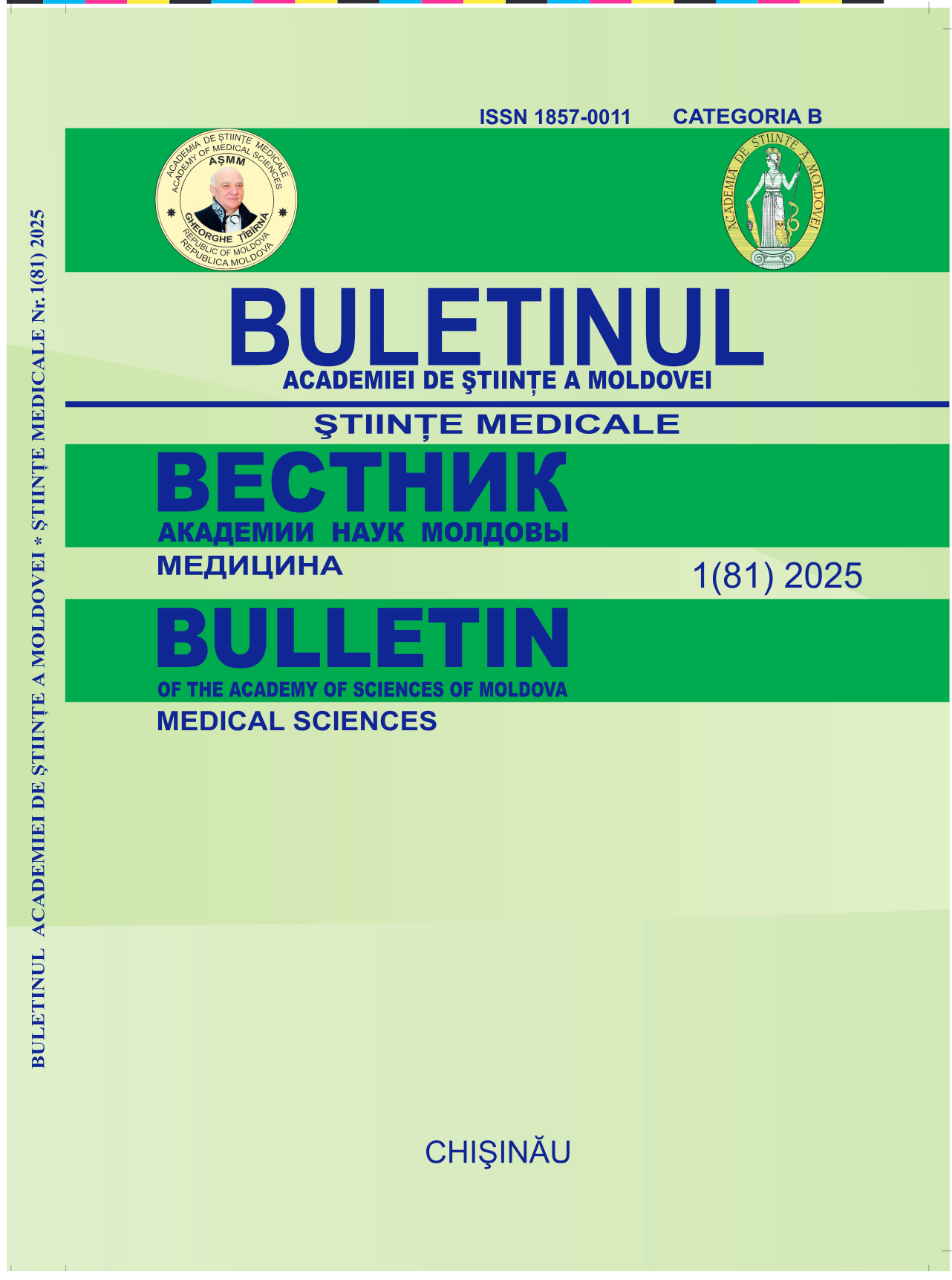Subclavian Steal Syndrome - case study. Diagnostic, therapeutic, and instrumental approaches
DOI:
https://doi.org/10.52692/1857-0011.2025.1-81.20Keywords:
subclavian steal syndrome, hemodynamic alteration, retrograde blood flow, cerebral hypoperfusion, blood pressure asymmetryAbstract
Subclavian Steal Syndrome (SSS) is a vascular disorder characterized by occlusion or stenosis of the proximal sub- clavian artery, resulting in a compensatory retrograde blood flow through the ipsilateral vertebral artery. This altered hemodynamic state may lead to a variety of clinical manifestations, including neurological deficits, cardiovascular symp- toms, and ischemia of the affected upper limb. Furthermore, SSS is recognized as a potential cause of syncope or presyn- copal episodes due to cerebral hypoperfusion, particularly triggered by positional changes of the arm.The etiology of SSS is most frequently linked to atherosclerotic disease, though it may also result from congenital arteriovenous malformations or iatrogenic causes, such as postoperative complications following coronary artery bypass grafting (CABG), especially when the internal mammary artery is utilized as a conduit. The defining feature of SSS lies in the reversal of blood flow and the disruption of normal circulatory dynamics. This hemodynamic compromise can have significant cardiovascular implications, highlighting the importance of vigilant monitoring in patients with a history of coronary artery surgical interventions. Accurate assessment of postoperative blood flow is essential to prevent serious complications, including myocardial ischemia. Additionally, routine measurement of blood pressure in both arms in ambulatory settings should be emphasized, as significant inter-arm blood pressure differences may serve as clinical indicators of underlying vascular pathologies, including SSS, peripheral vascular disease, or other circulatory anomalies
References
Brian J. Potter, MD, MSc, and Duane S. Pinto, MD, MPH Subclavian Steal Syndrome, Circulation. 2014; 129:2320-2323
Psillas G, Kekes G, Constantinidis J, Triaridis S, Vital V. Subclavian steal syndrome: neurotological manifestations. Acta Otorhinolaryngol Ital. 2007;27(1):33.
Budincevic H, Friedrich L, Tolj‐Karaula N, Maric N, Sucic T, Bielen I. Bilateral subclavian steal syndrome in an intensive care unit. A case report. Med Ultrason. 2014;16(3):264‐ 267.
Potter BJ, Pinto DS. Subclavian steal syndrome. Circulation. 2014;129(22):2320‐ 2323.
Osiro S, Zurada A, Gielecki J, Shoja MM, Tubbs RS, Loukas M. A review of subclavian steal syndrome with clinical correlation. Med Sci Monit. 2012;18(5):RA57‐ RA63.
Labropoulos N, Nandivada P, Bekelis K. Prevalence and impact of the subclavian steal syndrome. Ann Surg. 2010;252(1):166‐ 170.
Kargiotis O, Siahos S, Safouris A, Feleskouras A, Magoufis G, Tsivgoulis G. Subclavian steal syndrome with or without arterial stenosis: a review. J Neuroimaging. 2016;26(5):473‐ 480.
Fields WS, Lemak NA. Joint study of extracranial arterial occlusion: vii. subclavian steal–A review of 168 cases. JAMA. 1972;222(9):1139‐1143.
Parrott JC. The subclavian steal syndrome. Arch Surg. 1964;88(4):661‐ 665.
Aseem WM, Makaroun MS. Bilateral subclavian steal syndrome through different paths and from different sites–A case report. Angiology. 1999;50(2):149‐ 152.
Alcocer F, David M, Goodman R, Kumar Amruthlal Jain S, David S, A forgotten vascular disease with important clinical implications. Subclavian steal syndrome: case report and literature review Am J Case Rep 2013;
Reivich M, Holling HE, Roberts B, Toole JF. Reversal of blood flow through the vertebral artery and its effect on cerebral circulation. N Engl J Med. 1961;265:878–885.
Satti S, Golwala SN, Vance AZ, Tuerff SNSubcla- vian steal: endovascular treatment of total occlusions of the subclavian artery using a retrograde transradial subintimal approach.Interv Neuroradio2016;22:340–8.
Hennerici M, Klemm C, Rautenberg W. The subclavian steal phenomenon: a common vascular disorder with rare neurologic deficits. Neurology. 1988;38:669–73. doi: 10.1212/wnl.38.5.669.
Gosselin C, Walker PM. Subclavian steal syndrome: existence, clinical features, diagnosis and management. Semin Vasc Surg. 1996;9:93–97.
Smith JM, Koury HI, Hafner CD, Welling RE. Subclavian steal syndrome. A review of 59 consecutive cases. J Cardiovasc Surg (Torino) 1994;35:11–14.
Taylor CL, Selman WR, Rutcheson RA. Steal affecting the central nervous system. Neurosurgery. 2002;50:679–89. doi: 10.1097/00006123-200204000-00002.
Downloads
Published
License
Copyright (c) 2025 Bulletin of the Academy of Sciences of Moldova. Medical Sciences

This work is licensed under a Creative Commons Attribution 4.0 International License.



